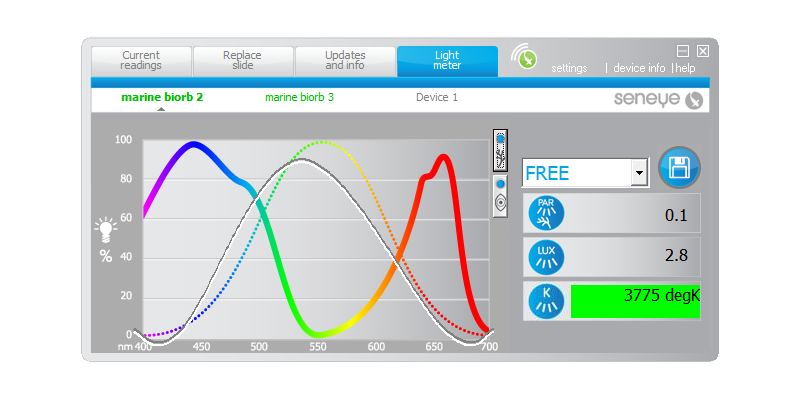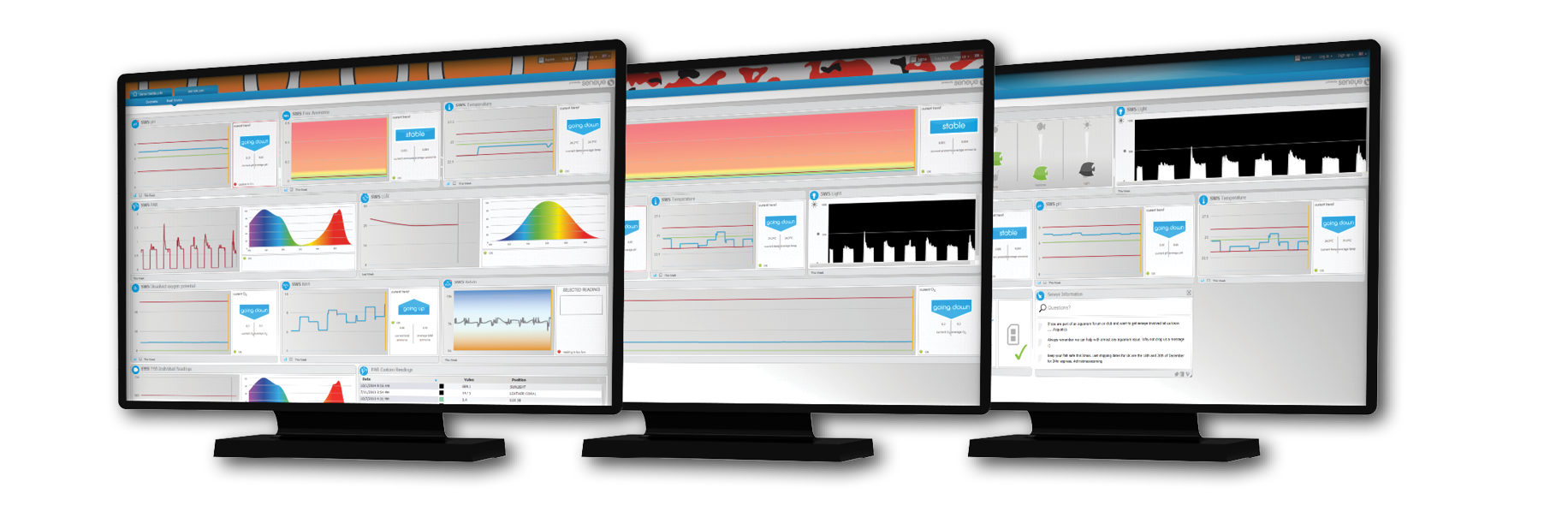Seneye PC instructions Portuguese
Table of contents
- 1. These instructions provide step by step advice for activating your seneye home, pond or reef device.
- 2.
- 3. Whats included with your seneye device
- 4.
- 5. Using with a PC - online
- 6. Using with a Seneye Web Server (SWS) - online
- 7.
- 8. Using in Data Logging Mode With A Power Adaptor - offline
- 9.
- 10. Contents
- 11.
- 12. 1. Quick start up steps
- 13.
- 14. 2. Soaking your seneye slide
- 15.
- 16. 3. Registering online and the seneye connect application
- 17.
- 18. 4. Syncing your seneye device
- 19.
- 20. 5. Registering your seneye slide
- 21.
- 22. 6. Installing your seneye slide
- 23.
- 24. 7. Placing your seneye device
- 25.
- 26. 8. Aquarium use
- 27.
- 28. 9. Pond Use
- 29.
- 30. 10. Seneye Connect Application SCA Offline Use
- 31.
- 32. 11. Viewing your current readings
- 33.
- 34. 12. Saltwater use
- 35.
- 36. 13. Seneye reef light meter
- 37.
- 38. 14. Seneye.me
- 39.
- 40. 15. Help and seneye answers
- 41. 16. Accessoires
- 42.
- 43. 17. Environmental and Safetey
These instructions provide step by step advice for activating your seneye home, pond or reef device.
Whats included with your seneye device
seneye+ slide ph and NH3 (1 month)
suction cup
float (seneye Pond only)
seneye connect application (SCA) on free download
seneye.me online dashboard
m.seneye.me mobile website
free seneye apps for Windows, Android and iPhone
alerts via email
alerts via SMS with an active seneye slide
The seneye device can be used in the following ways. Online will give you constant uploads to seneye.me with alerts. Offline will allow the device to work as a data logger and upload readings when the device is next connected to a PC using SCA.
Using with a PC - online
Connect your seneye directly to the PC. If your computer or laptop isn’t close enough you can extend the cable length by 2.5m using the seneye USB extension. For those who require even more range, the seneye active USB extension cable allows the cable length of the seneye device to be increased by an additional 15m. The seneye device can also be connected to a wireless USB bridge giving increased flexibility over Wi-Fi. You will however still need a PC running the SCA.
Your PC you will need the following spec:
PC with a wired or wireless network and TCP/IP protocol,
Windows XP, Vista 32-/64-bit, Windows 7 32-/64bit, & Windows 8 32-/64bit.
Full speed USB 1.0 port or higher
Minimum 1Ghz processor and 128mb RAM
HTML web browser: Internet Explorer 8.0+, Firefox 4.0+, Safari 4.0+ & Chrome.
Internet connection (for setup and online use)
Using with a Seneye Web Server (SWS) - online
The SWS removes the need for any PC in the house and will connect your seneye to your internet router. It will then send results directly to the seneye cloud website. Visit seneye.com/coming-soon for more information. With the SWS you can use a seneye device and an apple computer.
If you are using your seneye with a Seneye Web Server please follow these instructions.
Using in Data Logging Mode With A Power Adaptor - offline
After initial set up, your seneye can be connected to a seneye USB power adapter. This option is great if you don’t wish to have your seneye device constantly connected to a PC. When powered by the USB Power Adaptor, readings are stored on the internal memory ever hour. Warning lights are displayed on the on the seneye device if the water parameters are bad. You will not receive alerts via SMS or Email.
Contents
- Quick start guide
- Soaking your seneye slide
- Registering online and the seneye connect application
- Syncing your seneye device
- Registering your seneye slide
- Installing your seneye slide
- Placing your seneye device
- Aquarium use
- Pond use
- Seneye Connect Application SCA
- Viewing your current reading
- Saltwater use
- Seneye reef light meter
- Seneye.me
- Help and seneye answers
- Accessoires
- Environmental and Saftey
1. Quick start up steps
The following instructions are a quick set up guide for the seneye home, pond and reef.
If you have no previous seneye experience we suggest you read the full instructions.
Step 1. Soak your seneye+ ph & NH3 slide
Step 2. Register an account at www.seneye.me
Step 3. Download the seneye connect application at www.seneye.com/download
Step 4. Plug your seneye device into a USB port and name the seneye
Step 5. Register your seneye+ slide
Step 6. Install the slide in your device
Step 7. Placing your seneye device in the aquarium
2. Soaking your seneye slide
Your slide is delivered dry. Soak in your aquarium/pond for a minimum of 24 hours (48 hours for marine) before use.
If you do not soak your slide the pH will read low as the chemistry will be dry.
If you do not have a slide soaker they are available from the seneye store. Alternatively the slide can be soaked in a cup of aquarium water.
3. Registering online and the seneye connect application
- Visit the www.seneye.me/register website
- Click the ‘sign up’ button and use your preferred email address to receive alerts
- Enter the details of the aquarium that you are going to place the seneye device in
- After completing the information click the submit button. Your account has been created ready for use
- We will send you a seneye welcome email with your seneye.me details on.
After completing the registration you will be presented with the option to download the SCA.
Tip: You may need to disable your virus checker to allow the download and install. Before launching the software we advise you also add ‘c:/seneye’ and ‘seneye.exe’ as an exception. For more information click here. Failure to do this may lead to complications later.
Click the download button and save the file to your computer.
You can also find the software download on this link.
After the download has completed double click the downloaded file.
Follow on the on screen instructions to install the software.
4. Syncing your seneye device
Once installed, your SCA can be opened using the icon on your desktop or in the start menu.
1. Double click the seneye icon to start
2. Select your chosen language.
3. Enter your e-mail address when prompted; use the same email address that you registered with on seneye.me.
4. Connect the USB lead from the seneye device to your Windows computer.
5. After a short while the SCA will prompt you to enter the name your seneye device. (for example: John’s seneye) If it does not ask you to name please read this troubleshooting link.
The seneye connect application once launched will look like somthing like the screen below.

WAIT! Your seneye will be configuring in the background. Please leave connected to your PC (and running) for 1 hour to ensure the internal clock has been powered fully and syncing has completed. Once fully synced the SCA will show all the device info.
5. Registering your seneye slide
Each seneye slide has a unique activation code which you must register to your seneye device. This allows us to ensure your device uses the correct ,maths for the slide type and batch.
This link shows the ways to register your slide.
You will need to do this with each new slide.
6. Installing your seneye slide
1. Remove the black plastic back cover from the seneye device.
2. Take your pre-soaked slide and insert it into the device, taking care to hold it on the sides so the sensor areas are not touched. Ensure no air is trapped between the slide and device. This process is best carried out with the device under water.
3. Replace the back cover on the seneye device.
Tip: To ensure continuous and accurate readings for pH and ammonia, you should simply replace your seneye slide each month.
7. Placing your seneye device
Ensure that the drip protector is located on the end closest to your USB connector. The drip protector should be located at the lowest point on the cable.
Your seneye device is designed to remain submerged. The seneye slide should not be allowed to dry out after intial soaking as this may give inaccurate readings. If your seneye slide does become damaged, please replace with a new one or contact [email protected] for more information.
8. Aquarium use
In an aquarium your seneye device should be attached using the supplied suction cup. Position the seneye device close to the filter or in an area of high flow to ensure sufficient water flow through the device.
TIP: If the device is mounted to the back of the aquarium with the white face looking in, it could read out of water. Make sure the back of the device looks into the aquarium.
If you are using the light meter, then we recommend that you attach the seneye device to the front of your aquarium. If you wish to take precise light meter readings, use the light meter suspended below the water level pointing directly towards your aquarium lighting. This link explains more.
9. Pond Use
You can place your seneye device inside your pond filter or float it on the surface of your pond. If you are using your seneye device in the filter, then we would recommend that you position it so if you have a leak the seneye device will not remain submerged. If your seneye device is connected to an internet enabled PC, you can choose to receive an alert if this happens.
You can leave the seneye device floating in your pond. However if you would like to know if your pond has a leak, we suggest you teather the cable to the side of the pond so if the water level does drop the device is held out of water.
TIP: Make sure no air is not trapped under the device otherwise it will indicate that it’s out of water. For this reason we recommend a postion with good flow but little aeration
10. Seneye Connect Application SCA Offline Use
11. Viewing your current readings
12. Saltwater use
The seneye uses different maths depending on the ionic strength of the water and for this reason you will need to activate the use of the marine pH maths line to ensure the accuarcy.
Click this link to learn more on how to activate the marine maths.
13. Seneye reef light meter
The seneye reef adds a whole load of features to help you better understand the light in your aquarium. Light causes plant and algae growth so understanding it is of great importance.
This link explains how to use the light meter and what it does.
14. Seneye.me
This link will take you to a specfic set of pages on seneye.me to help you get the most out of your seneye.
15. Help and seneye answers
16. Accessoires
seneye has wide range of accessory products and we suggest that have a look through this catalogue to decide what you may need.
17. Environmental and Safetey
WARNINGS AND CONDITIONS
Do not attempt to repair your seneye device. Please contact [email protected]





